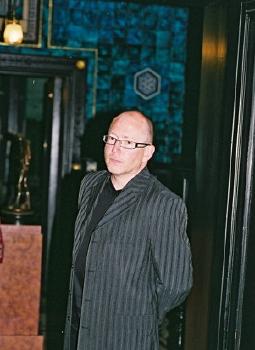|
<< -- 2 -- Malcolm Miller PIANO MEETS SITAR

The composer introduced his oeuvre, describing how his earliest works were composed in Palestine, later Israel, where he moved as a child with his family from his birthplace, Munich, to escape persecution in Nazi Germany. He recalled how earliest musical influences were derived both from Arab musicians he had befriended as a youth in Druze and Bedouin villages, and from the Western classical tradition. Indeed his first published work, Variations on an Eastern Folk Tune, Books 1 & 2 (1957-8), featured on the CD though not in this recital, is based on a Middle Eastern folk tune subject to transformations in an eclectic array of genres, ranging from Arab debkas, through Romanian, Greek and Yugoslavian, as well as Sephardi and Indian idioms. It was premièred by Malcolm Binns and won the 1959 International Viotti Competition. Later he developed a love for Indian music, studying Sitar as part of an Indian and Arabic music degree at SOAS in London. Feuchtwanger's mastery of the Raga in his own music led to commissions for the Cheltenham Festival, and his works were taken up by Yehudi Menuhin, and inspired the famous recording with Ravi Shankar, East Meets West.
Well-known pianists who have performed Feuchtwanger's works include Craig Sheppard, the dedicatee of his Study No 4 in an Eastern Idiom (Tariqa 1) (1982), with which Dickenson launched his recital, and which evokes the sonority of the Persian Santur through overtones and added resonances. This work allies Feuchtwanger with his fellow German-born Israeli composer Yehezkel Braun (born 1927), whose recent Piano Trio, entitled Psalterion, is a ravishing synthesis of Santur with a Western Piano Trio based on Arabic modes. Feuchtwanger's piece features an ever-present open 5th drone with constant embellishments around it, eventually sweeping up and down keyboard, with an almost Flamenco effect, contrasted by short simple refrains and silences. The Study No 1 in an Eastern Idiom that followed was more dramatic, individual pitches etched out, plectrum-like, and embellished with trills. The Study No 3 in an Eastern Idiom (1963) impressed as an astonishing imitation of the sitar's distinctively rich timbre, with fibrile Satiesque textures, high registers and nuanced chromaticism.

Haydn Dickenson at Leighton House
|
Of all the works played, the Study No 6 in an Eastern Idiom (Tariqa 2) (1986) was the longest and most intensely passionate, almost expressionistic. Its mesmeric pedal point gave rise to luminescent overtone patterns, with a whirlwind of ornamental gestures leading to silences, sustained reflective individual pitches, tinged with plangent dissonance. The final Study No 7 in an Eastern Idiom -- Dhun (1992) displayed the most compelling harmonies, a mellow, rustic, tonal flavour enveloped in subtle embellishments radiating a mood of calm, warmth and reflection.
Continue >>
Copyright © 17 June 2006
Malcolm Miller, London UK

|

